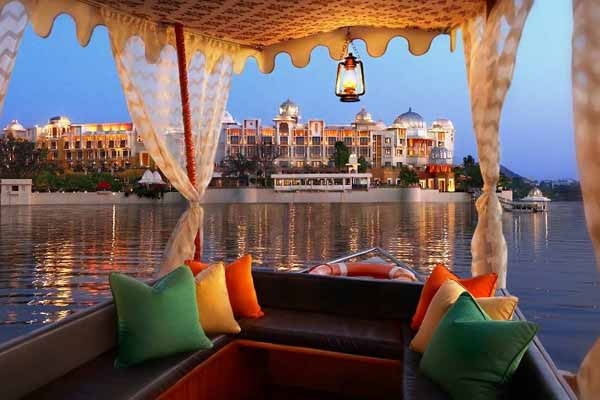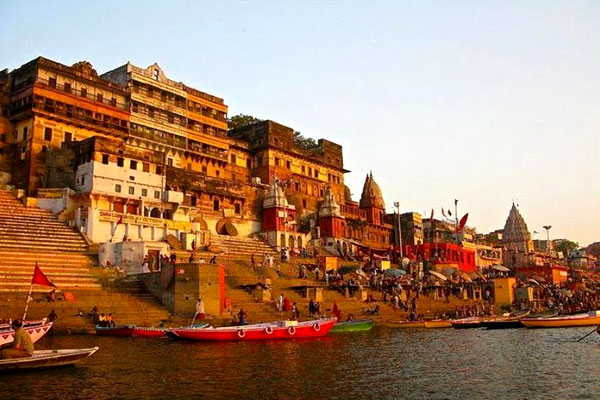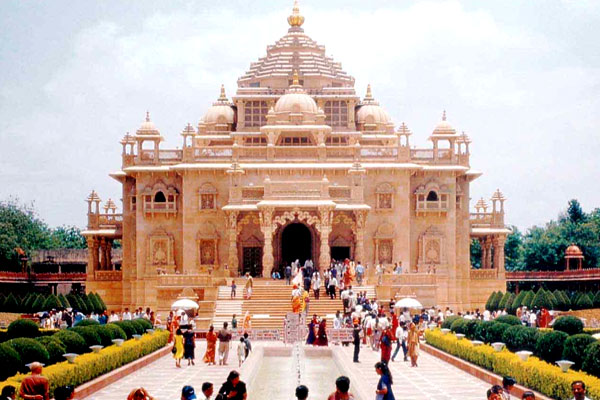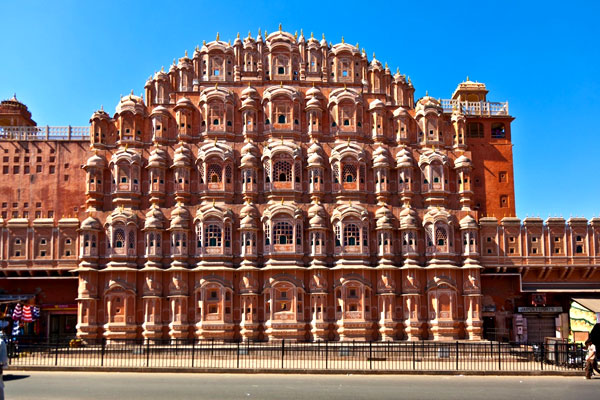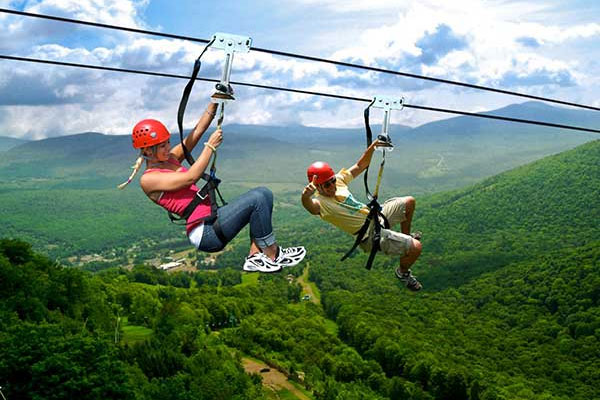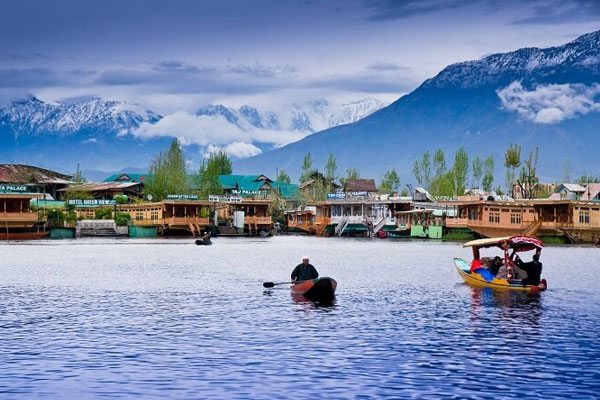Culture and Heritage of India
- Home
- Tour Packages
- India Luxury Tour Package
- Culture and Heritage of India
Culture and Heritage of India
Covered : Delhi - Jaipur – Agra - Gwalior –Khajuraho - Varanasi- No of Nights: 12
- No of Days: 13
Get ready for a critical event of India's way of life, craftsmanship, legacy and history. The goals incorporated into Culture and Heritage of India Tour by LuxoIndia are handpicked and created to parade couple of stupendous parts of this nation. Alongside Golden Triangle Tourist Circuit (which comprises of Delhi, Agra and Jaipur-a favored circuit by many individuals around the globe), Gwalior, Khajuraho and Varanasi are additionally incorporated into it. During these twelve evenings and thirteen days you will encounter India's city life, sacred customs in journey locales and old-world appeal in its archeological goals. Peruse the schedule for more data with respect to the visit.
Day 1: Delhi
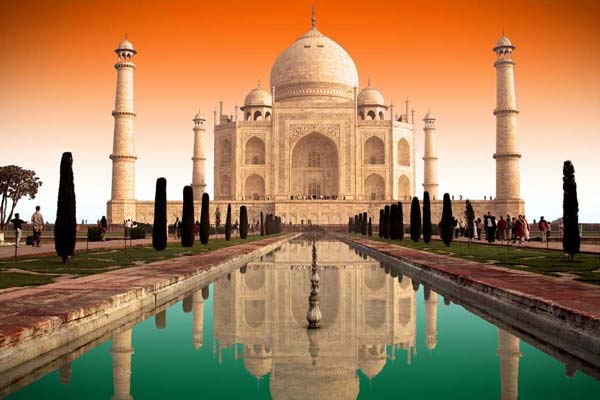
On your landing in Delhi Airport/Railway Station meet our visit delegate and get accompanied to a pre-booked inn. Registration to your lodging and unwind.
Delhi is specked with old, European and hey tech foundation. From road nourishment to flawless café, Delhi doesn't disillusion foodies as well. For culture-vultures Delhi is an open composition. This much-merited capital of India is a work of ancient history and vogue, yet with the appropriate measure of fixings.
Overnight stay in the hotel.
Day 2: Delhi
After breakfast continue for New Delhi touring. Maybe a couple of the locales incorporated into the visit comprise of Old Delhi advertise, Qutab Minar, Red Fort, Laxmi Narayan Temple and Rashtrapati Bhawan. Cycle ride and driving past India Gate are likewise included the touring session.
Old Delhi Market has a mélange of products, nourishment and excitement. Name anything and you can locate an extensive assortment in this market. Khari Baoli, the zest market of Old Delhi is the biggest discount market of Asia. Here, you can treat your taste-buds with a portion of Delhi's best road nourishments, or shop in the bug markets.
Qutab Minar is a 100-meter-high minaret, worked in the twelfth century. It is an UNESCO World Heritage and is joined by other archeological structures like The Tomb of Iltutmish and Alai Darwaza. The minar is worked of red sandstone, marble and sandstone and has stanzas of Quran engraved on it. The initial three stories are produced using red sandstone, while the fourth and fifth stories are worked of marble and sandstone. The primary floor has Quwwat-ul-Islam Mosque. Qutab Minar is a noteworthy vacation destination of Delhi and has been viewed as an UNESCO World Heritage Site.
Red Fort isn't only an UNESCO World Heritage Site, but on the other hand is the scene of India's Independence Day festivity. This is an unmistakable feature of Delhi's legacy, history and design. The structure was worked in 1857 and in those days, it filled in as the habitation of the ruler for around 200 years. The façade has an Indian Flag rippling through. The stronghold is encased with immense dividers worked from red sandstone. Its design mirrors an amalgamation of Mughal, Persian, Timurid and Hindu styles.
Laxmi Narayan Temple or Birla Temple is a critical Hindu religious spot of Delhi devoted to Lord Vishnu. Different icons inside the unpredictable comprise of Lord Shiva, Lord Buddha and Lord Krishna. Complete zone of the complex is about 7.5 sections of land, which is decorated with numerous hallowed places, wellsprings, nursery and Geeta Bhavan.
Rashtrapati Bhavan and India Gate are in closeness, both of these hold extraordinary criticalness in India's political and nationalistic situation. Edwin Lutyens planned India Gate, which goes back to 1921 and was worked to pay respects to the officers who kicked the bucket in First World War and Anglo-Afghan War. The structure of India Gate was motivated by Arc-de-Triomphe of France, even the pathway to Rashtrapati Bhawan and courses are much like it. Rashtrapati Bhawan is the official habitation of the leader of India. The British fabricated this structure for emissary after Delhi was concluded to be the capital of India in Delhi Durbar, 1910.
Overnight stay in hotel.
Day 3: Delhi-Jaipur
This day drive to Jaipur, the Heritage City. On landing continue to your inn, registration and unwind. Rest of the day is to be spent at relaxation. You may likewise remain at the lodging or go for touring.
Jaipur is the capital of Rajasthan province of India, surely understood as Pink City and for its legacy and archeological destinations. The city is additionally trimmed with vivid bazaars from where you can purchase dynamic bangles, garments, antiquities, painstaking work and so on. The well known traveler circuit of India, Golden Triangle comprises of three urban communities, in particular Agra, Delhi and Jaipur. This city is surely a noteworthy traveler goal of India.
Overnight stay in hotel.
Day 4: Jaipur Sightseeing
Today you visit different attractions of Jaipur. Golden Fort, galleries, Jantar Mantar and Hawa Mahal are a few locales to be visited this day. Alongside touring, you can appreciate exercises, for example, sight-seeing ballooning, elephant polo, elephant ride, cooking classes and legacy vehicle drive.
Golden Fort is a slope stronghold and UNESCO World Heritage Site, likewise a star fascination of Jaipur. The post and royal residence are decorated with stylish fine art. The structure was worked by Raja Man Singh I in 1592 with red-sandstone and white-marble for the most part. Valuable stones, depictions and mirrors were utilized for stylistic layout. Since it is roosted on a ridge, the perspective on encompassing is charming. In contrast to numerous structures of antiquated period, Amber Fort is well-protected and hasn't got its appeal blurred. From the lower region, voyagers can hop by walking, procure a jeep or ride an elephant.
Hawa Mahal is a symbol of the city, arranged in the midst of clamoring bazaar. This red-tinted fortification is otherwise called Palace of Winds, inferable from the way that it has a few small scale windows in honeycomb structure. These windows were made for the ladies of illustrious families, so they could appreciate the rushing about of the market, without getting seen by open.
Jantar Mantar, going back to eighteenth century, is the place an accumulation of structural galactic instruments are introduced. You can detect world's biggest sundial here, alongside Laghu Samrat Yantra, Nadivalya Yantra, Jai Prakash Yantra and other visionary gadgets. These gadgets are an impression of sharp mind and perfect figurings. Indeed, even today these instruments are utilized by crystal gazers. Understudies of Astronomy and Vedic Students get the chance to become familiar with their subject in the observatory.
Overnight stay in hotel.
Day 5: Jaipur- Agra
Have your morning meal and continue to Agra, via vehicle or train.
Agra is the city of Taj Mahal, settled close to the Yamuna Ganga. It has its Mughal enchant unblemished and solid. Some time ago it was the seat of Mughal Empire and today it is a noteworthy vacation destination of India. Agra is situated in Uttar Pradesh territory of India. It houses a few UNESCO World Heritage Sites, including one of the Seven Wonders of the World, Taj Mahal. This is an ideal spot for the admirers of legacy, craftsmanship and history.
As you reach Agra, check-in to your pre-booked hotel and relax. Stay overnight in hotel.
Day 6: Agra Sightseeing
On the 6th day of Culture and Heritage of India Tour, prepare to visit one of the Seven Wonders of the World and the real vacation destination of Agra, The Taj Mahal. This white-marble tomb is regularly viewed to as "Crown of Palaces". Mughal Emperor appointed it in 1632 for his cherished spouse, Mumtaz Mahal. It took 22 years for Taj Mahal prepare all and sparkling. The Taj Mahal is situated at the Southern Bank of Yamuna River and fills in as an effective image for India's rich history and legacy. To manufacture it, a work of Indian, Islamic, Mughal, Persian Ottoman and Turkish styles of structures was fused. This tomb got its name recorded in the rundown of World Heritage Site UNESCO, in 1983. Today it is visited by in excess of 3 million guests consistently.
Other fascination in be visited today is Agra Fort, another UNESCO World Heritage Site. This fortification is simply 2.5 km away from Taj Mahal. Initially it was a block stronghold known as Badalgarh, we may likewise consider it a post city. The posts has dividers that are seventy feet high and four entryways, one of which (Khizri) has its opening towards Yamuna River. Its nurseries are thriving; in reality each corner is well-kept up. Designs of the inside are done perfectly, with valuable stones, mirrors, carvings and so forth.
Fatehpur Sikri is likewise added to the rundown to activities. This antiquated city is datable to 1569, when the Mughal Emperor discovered it. The ruler moved his capital from Agra to Fatehpur Sikri as a signal of respects to the prominent Sufi Saint Salim Chishti. Students of history state Akbar checked out decorating Fatehpur Sikri, and this is entirely apparent after taking a gander at accumulation of great Mughal structures in the city. The city is an UNESCO World Heritage Site and a hotspot for voyagers visiting from distant.
Overnight stay in hotel.
Day 7: Agra- Gwalior
On the seventh day of the visit, look at from your inn and continue to Gwalior. This is a tremendous chronicled city situated at the Heart of Incredible India, i.e Madhya Pradesh state. It is strewn with different prevalent vacation spots, directly from archeological to present day frameworks. Mughals, Scindias and Marathas are a portion of the rulers who prettified various corners of Gwalior. An excursion to Gwalior is an outing to history and legacy.
On reaching Gwalior, check-in at your pre-booked hotel and relax. Overnight stay in hotel.
Day 8: Gwalior Sightseeing
On this day get set for a connecting with session of Gwalior touring. The prime feature of the day is Gwalior Fort, situated at the core of the city. The structure of the post is something that merits a unique notice. It was worked in the eighth century and has now been transformed into an archeological exhibition hall. Other than the guarded structure that shielded the illustrious inhabitants from foe assaults, the fortress comprises of two royal residences (Man Mandir and Gurjari Mahal) worked by Man Singh Tomar. The fortress in reality has a few different structures which are profoundly acclaimed, similar to Garuda Monument, Karn Mahal, Vikram Mahal, Teli Ka Mandir, Saas-Bahu Temple and Chhatri of Bhim Singh Rana, among others. There is such a great amount to see and do in Gwalior Fort. By late night come back to your room and unwind. Stay overnight in hotel.
Day 9: Gwalior- Khajuraho
On this day head to Khajuraho, one more recorded city of Madhya Pradesh and a well known vacation spot of India. A British official discovered this community in 1838, in a wilderness. Khajuraho is well known for its suggestive models. The Khajuraho Group of Monuments is an UNESCO World Heritage Site and pulls in countless voyagers consistently.
Check in at your hotel and relax. Rest of this day is to be spent at leisure. Stay overnight in the hotel.
Day 10: Khajuraho Sightseeing
Today you will investigate Khajuraho. All things considered, the landmarks of Khajuraho are World Heritage Site, as considered by UNESCO. The sanctuaries are datable to around 950 and 1050 CE and are said to have been worked by Chandela tradition. A few sanctuaries are committed to Hindu divine beings and some to Jain, yet the closeness in their structure and nearness give a thought that in old period there was sheer concordance between these two religions. By twelfth century, there were 85 sanctuaries, of which just 20 withstood the trial of time. The sanctuaries are separated into three sections; to be specific Eastern, Western and Southern. Vishnu, Shiva, Parshvanath, Parvati, Rishabha and Hanuman are some of significant gods of the sanctuaries.
In the wake of investigating Khajuraho Monuments, continue to your lodging. Stay overnight in hotel.
Day 11: Khajuraho-Varanasi
Today you get a trip to Varanasi, the blessed city. Varanasi vessels of being the most seasoned city of the world, having written history of 3500 years. The city is situated on the banks of Holy River, Ganges/Ganga and is one of the seven holiest urban communities of India. Hypnotizing aarti is performed at night on the banks of stream, which is gone to by a large number of enthusiasts. No legacy visit to India is finished without an excursion to Varanasi.
As you reach Varanasi you check in at your lodging and unwind. Go to Ganga aarti at night.
Maybe the most notorious image of Varanasi is the pictures of saffron clad intellectuals overwhelmed in the smoke of incense stick waving huge lit multi-layered lights in synchronicity by the washing ghat of the sacred stream Ganges. The night aarti in Varanasi - despite the fact that exceptionally arranged - happens each dusk at Dasaswamedh Ghat close Kashi Vishwanath Temple and is viewed as one of the must have social encounters in Varanasi.
Overnight in the hotel.
Day 12: Varanasi
On the twelfth day enjoy an early-morning session of sailing on the Ganges and stopover at various washing and incineration ghats of the city. Come back to the inn and eat. In the wake of sprucing up prepare for touring voyage through Varanasi.
Kashi Vishwanasth Temple is a well known vacation destination of Varanasi. The sanctuary is devoted to Lord Shiva and is one of the twelve Jyotirlingas of the master. This is one of the most significant places of worship of Lord Shiva on the planet; a Hindu considers visiting this sanctuary in any event once in his life. A visit to this sanctuary and taking a dunk in the stream cause the fans to accomplish moksh (salvation).
Different features of the day are Dashashwamedh Ghat, Dhamek Stupa, Assi Ghat, Manikarnika Ghat and Ramnagar Fort.
Day 13: Varanasi-Delhi
Toward the beginning of the day have your morning meal and look at from the lodging. You get helped move to the airplane terminal from where you get a trip to Delhi and proceed your ahead adventure. Consequently, this adventure closes.


